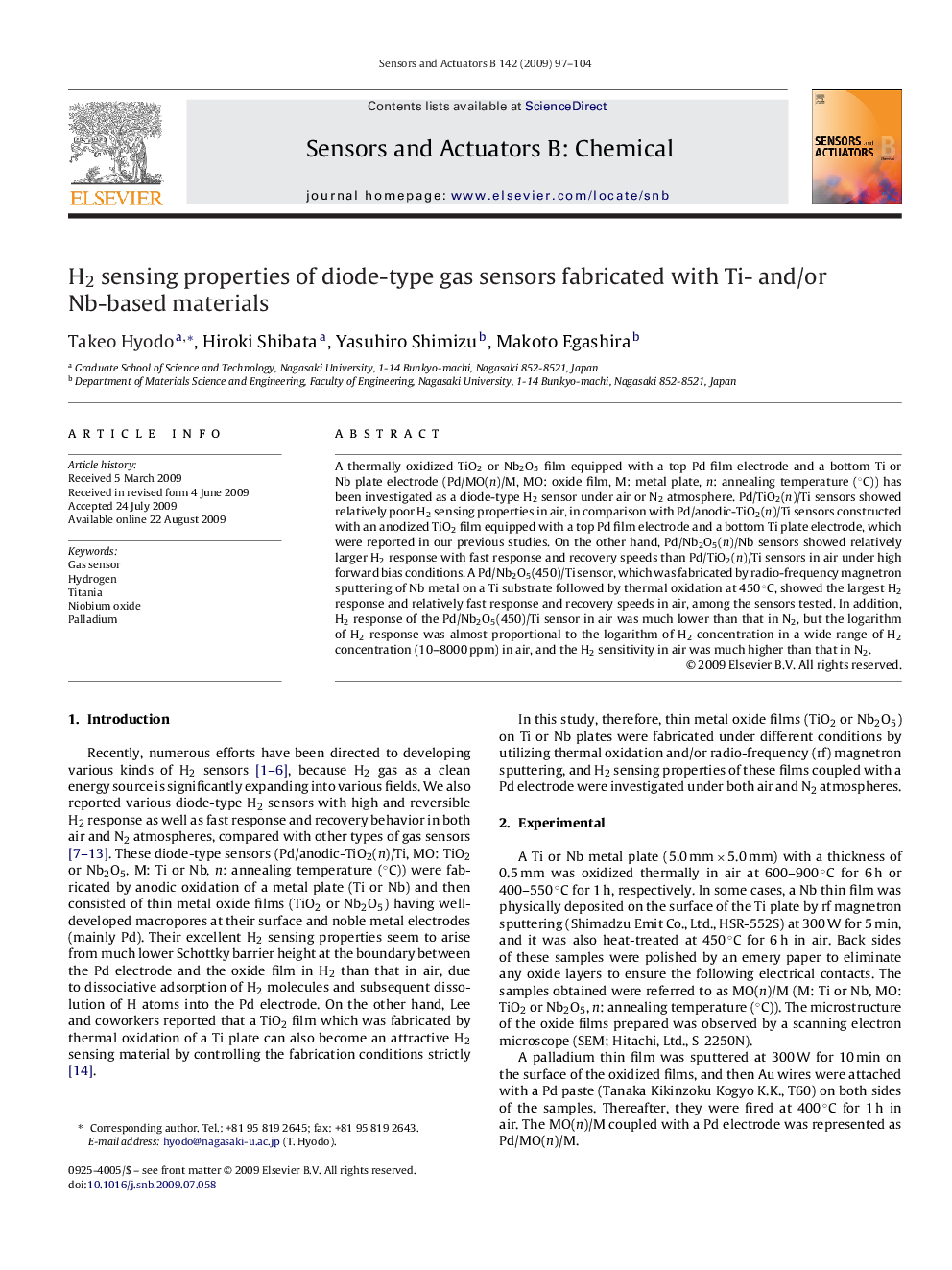| Article ID | Journal | Published Year | Pages | File Type |
|---|---|---|---|---|
| 743123 | Sensors and Actuators B: Chemical | 2009 | 8 Pages |
A thermally oxidized TiO2 or Nb2O5 film equipped with a top Pd film electrode and a bottom Ti or Nb plate electrode (Pd/MO(n)/M, MO: oxide film, M: metal plate, n: annealing temperature (°C)) has been investigated as a diode-type H2 sensor under air or N2 atmosphere. Pd/TiO2(n)/Ti sensors showed relatively poor H2 sensing properties in air, in comparison with Pd/anodic-TiO2(n)/Ti sensors constructed with an anodized TiO2 film equipped with a top Pd film electrode and a bottom Ti plate electrode, which were reported in our previous studies. On the other hand, Pd/Nb2O5(n)/Nb sensors showed relatively larger H2 response with fast response and recovery speeds than Pd/TiO2(n)/Ti sensors in air under high forward bias conditions. A Pd/Nb2O5(450)/Ti sensor, which was fabricated by radio-frequency magnetron sputtering of Nb metal on a Ti substrate followed by thermal oxidation at 450 °C, showed the largest H2 response and relatively fast response and recovery speeds in air, among the sensors tested. In addition, H2 response of the Pd/Nb2O5(450)/Ti sensor in air was much lower than that in N2, but the logarithm of H2 response was almost proportional to the logarithm of H2 concentration in a wide range of H2 concentration (10–8000 ppm) in air, and the H2 sensitivity in air was much higher than that in N2.
